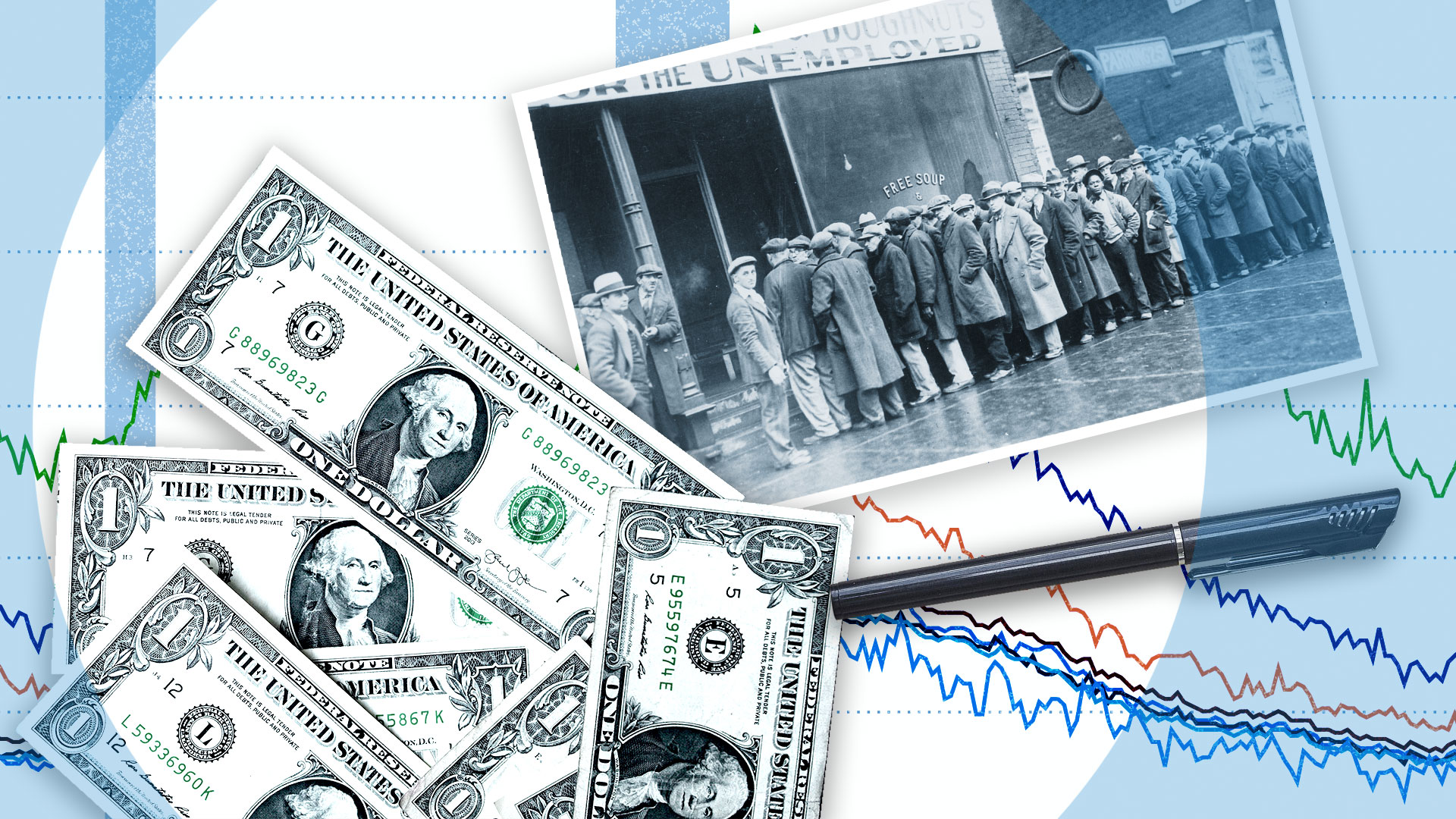From the start of the recession in February through July, the state of Minnesota paid $2.3 billion in benefits from its regular unemployment compensation programs,1 according to U.S. Department of Labor records. Adjusted for inflation, that’s 10 percent more than in all of 2009, the worst year of the Great Recession in terms of payout.
The state also disbursed another $4.7 billion in expanded jobless benefits funded by Congress’ pandemic relief legislation.
Benefit payments remain high because unemployment, which peaked in May as a result of Covid-19 disruptions, is still significantly higher than prepandemic levels.
“We’ve been gaining jobs back since then, but it’s a fairly slow process,” said Oriane Casale, the interim director of the state’s Labor Market Information Office.
She warned that recovery may slow further in the coming months as icy temperatures make it more difficult for some businesses to provide enough social distancing to reassure customers concerned about Covid-19.
Throughout the Ninth District, other states have also spent significant amounts (Chart 1) since February as unemployment rates reached heights not seen in recent memory. As in Minnesota, unemployment remains high, requiring high spending on benefits.
For Minnesota, there’s another challenge down the road. After the state depleted its unemployment trust fund in July, it began borrowing from the U.S. Treasury.2 To repay that loan, it will likely have to raise unemployment taxes paid by employers. As of the end of September, Minnesota owed the federal government $577.8 million (see the accompanying table).
Slow recovery
When unemployment peaked in May, nearly one in 10 Minnesota workers was out of work (Chart 2). Though a swift rebound followed, the unemployment rate as of August was 7.4 percent, still more than double the prerecession rate.
According to state employment statistics, the hardest hit industries in May were industries with some of the largest number of workers. Many are still far below prerecession levels.
The leisure and hospitality industry, which accounts for a tenth of all nonfarm jobs, was directly affected by a late-March shutdown order meant to slow the spread of Covid-19. In May, there were 49 percent fewer jobs compared with the same month a year ago. Though the industry managed to bounce back after the order was lifted in June, August employment was still down 27 percent compared with a year ago. (Note that year-ago numbers are used for comparison because these statistics aren’t adjusted for seasonality; leisure and hospitality employment is usually higher in warmer months.)
Industries not directly affected by the shutdown order also suffered from the resulting economic slowdown. For example, employment in professional and business services, including architecture and engineering firms, was down 4 percent in August compared with a year ago.
Retail trade has been one of the bright spots, with August employment up 0.5 percent.
As an indicator of how difficult it may be to find work in Minnesota, Casale said there were 230,000 unemployed workers in August and just 60,000 openings listed on the state job bank. “That’s something that we just haven’t seen in forever.”
Higher unemployment?
While Minnesota’s unemployment rate peaked lower than rates in most other Ninth District states, it’s possible this number doesn’t fully reflect the extent of joblessness.
The state Labor Market Information Office has noted that the number of workers who say they’re unemployed is lower than the number of workers who tell the unemployment office they’ve been unemployed at least a week; the official term is “continued claims.” In May, the number of continued claims was 19.8 percent higher than the number of unemployed. Some of this, the state says, may have to do with workers who were confused about whether they had still had a job given the rapid changes and uncertainty of a pandemic-stricken economy.
Among Ninth District states, Montana and Michigan also reported the same discrepancy at different points. When continued claims are used to calculate unemployment, Minnesota’s unemployment rate actually peaked in May at 14.6 percent. In August, unemployment would have been 8.1 percent, much closer to the “official” unemployment rate of 7.4 percent.
Trust fund
So far, Minnesota is the only Ninth District state to have depleted its state unemployment trust fund, the main source of funding for jobless benefits. It’s one of 19 states and territories to have required federal loans as of the end of September.
Among other district states, Michigan appears closest to requiring a loan. State officials said in early September that they expect to borrow by year’s end. As of the end of the month, Michigan’s trust fund had 30 percent as much in it as it had at the beginning of February.
When 2020 began, Minnesota appeared to have just about enough money in its trust fund to weather the next big recession.
| MN UTF | MN amount owed to US Treasury |
MT UTF | ND UTF | SD UTF | WI UTF | MI UTF | |
|---|---|---|---|---|---|---|---|
| 2/1/2020 | $1,665,714,059 | $376,026,493 | $220,088,282 | $134,452,054 | $1,970,532,582 | $4,677,505,683 | |
| 3/1/2020 | $1,575,831,026 | $364,972,015 | $209,851,774 | $132,259,028 | $1,925,526,618 | $4,597,291,155 | |
| 4/1/2020 | $1,416,311,306 | $350,235,485 | $195,147,387 | $128,761,447 | $1,883,810,982 | $4,516,313,423 | |
| 5/1/2020 | $1,132,249,205 | $327,910,334 | $159,156,752 | $108,794,259 | $1,929,356,780 | $4,374,185,282 | |
| 6/1/2020 | $665,492,966 | $273,704,527 | $206,631,950 | $92,338,962 | $1,705,206,932 | $3,632,567,563 | |
| 7/1/2020 | $207,409,458 | $239,223,207 | $152,802,620 | $126,477,897 | $1,577,200,325 | $2,420,861,304 | |
| 8/1/2020 | $92,318,753 | $(93,667,695) | $223,684,204 | $314,251,533 | $119,184,253 | $1,426,547,397 | $1,942,860,340 |
| 9/1/2020 | $130,394,953 | $(389,716,196) | $216,972,445 | $298,874,459 | $123,902,084 | $1,391,033,358 | $1,520,141,189 |
| 9/28/2020 | $160,554,653 | $(577,832,781) | $201,258,233 | $276,397,132 | $119,123,000 | $1,328,742,918 | $1,376,963,878 |
At the urging of the federal government, states aim for a so-called solvency level in their trust funds, defined as an amount needed to pay a whole year of jobless benefits equivalent to benefits paid out in the three years with the biggest payouts in the past two decades. Minnesota had 94 percent of the money needed to reach solvency. Among other Ninth District states, Wisconsin was at 97 percent and the rest exceeded solvency.
But solvency wouldn’t have been enough for Minnesota. State spending on unemployment benefits from February through July alone was 25 percent higher than the solvency level.
There are differences in unemployment rates and how each state runs its unemployment insurance program that may cause funds to deplete faster. For example, the average weekly compensation in Minnesota is the second highest in the district, averaging some $378 a week in recent months, not counting any extra pandemic benefits. South Dakota, the lowest in the district, averaged $286.
Minnesota has also not replenished its funds as much as some other states. North and South Dakota, for example, used federal pandemic aid to replenish their trust funds and avoid the tax hikes that would otherwise be needed. Critics of similar moves in other states have said the aid would be better used to harden the economy against further pandemic impact or to help those struggling the most.
Unemployment taxes are paid by employers in most states, and they usually pay more when the trust fund is low, though the tax hike doesn’t happen right away. Under Minnesota law, the tax rate goes up automatically, depending on how much money is in the fund as of March 31 the year before.
Employers in Minnesota paid an average of $27 a month for each employee in 2019, according to Labor Department data. In 2013, when the state trust fund was at a third of the solvency level, the average tax was $63 a month.
Employers also pay more if they have a history of more layoffs. But Minnesota, along with all Ninth District states but South Dakota, has decided to not penalize employers for pandemic layoffs, meaning the tax increase would be spread across all employers and not concentrated on those with the most layoffs.
For Minnesota, the road ahead is unclear.
“It took us a very long time to get back to the number of jobs that we had before … the Great Recession,” Casale said. “That’s an open question, how long will it take after this recession.”
IHS Markit, a firm that produces macroeconomic forecasts for the state, reported that it doesn’t expect unemployment to return to prepandemic levels until 2024, according to the state’s July economic report. “IHS notes that, because economic outcomes depend on the pandemic’s course, all forecasts remain highly uncertain,” the report said.
Endnotes
1 The $2 billion figure includes workers covered by unemployment insurance, as well as some who are not formally part of the program but enjoy the same benefits, such as federal workers.
2 The trust fund pays for regular benefits. Pandemic benefits are funded by the federal government, and states don’t have to repay them.
Tu-Uyen Tran is the senior writer in the Minneapolis Fed’s Public Affairs department. He specializes in deeply reported, data-driven articles. Before joining the Bank in 2018, Tu-Uyen was an editor and reporter in Fargo, Grand Forks, and Seattle.






